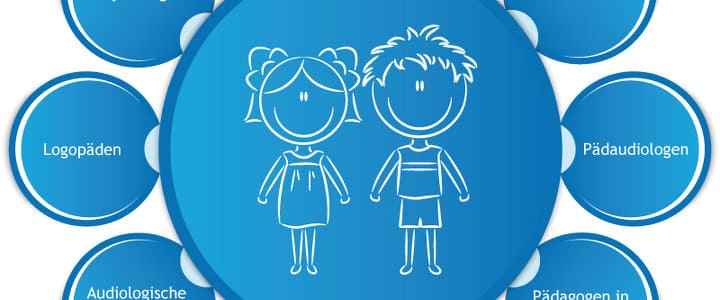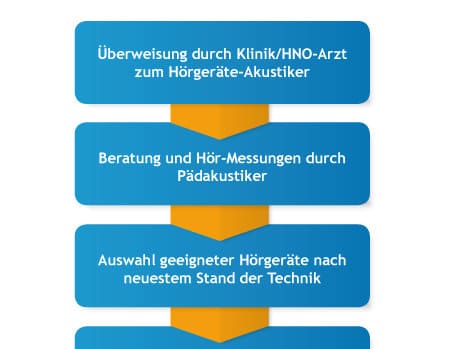Hearing systems for children
Adjusting a pediatric hearing system
After deciding to opt for a hearing aid with the aid of the ENT specialist, the first visit to an audiologist takes place. To find out as much as possible about your child’s hearing, another hearing test (dependent on the age of the child) is conducted by a pediatric audiologist. Only when the results of all conducted tests have been analyzed can a suitable care proposal be made. Based on the results and conversations with the parents, the pediatric audiologist assembles a series of hearing systems, which will then be adjusted and tried out (=comparative adjustment). In the end, your child will be given the hearing aid with the best results. You will then visit us every three months after successful adjustment to check if everything is working well.
The exact process is shown in the organigram (click to increase).
As you can see, your audiologist also invests a great deal of time in your child’s care. The adjustment of the hearing systems, the primary- and follow-up support and servicing take many hours. Normally, the hearing aid will be used for five years. After that, your child can claim a new one.
Modern hearing systems for children
Nowadays, there is virtually no form of hearing impairment for which you cannot find a technical aid. After the diagnosis of hearing loss, the right technology should be chosen for your child so that it can benefit from the hearing experience as soon as possible. Normal development is only possible with the early provision of hearing technology and audiometry.
In the majority of cases, the solution to a hearing loss is the use of hearing systems. The right hearing aid allows your child to develop a good ability to communicate. Modern hearing systems offer a wide range of options. Hearing aid technology has made enormous progress over the past twenty years. Digital technology now allows hearing systems to be adjusted individually to the wearer’s personal hearing needs.
Infants will normally be equipped with behind-the-ear-hearing systems. These devices are suitable for the majority of forms of hearing loss, from mild through to moderate, to severe. For older children with mild to moderate hearing loss, in-ear-systems may be suitable, individually adjusted to the outer ear canal. In cases of severe and profound hearing loss, cochlear implants may be used; these are electrodes with an external receiver that are surgically inserted into the inner ear.
The need for a hearing aid is diagnosed and prescribed by the specialist or a clinical facility. The adjustment itself is carried out by the audiologist.
When selecting suitable hearing systems, we pay particular attention to child-friendly features, such as:
Hearing aid manufacturer offer a variety of hearing systems which have been developed especially for children. The decision, whether your child should wear one or two hearing aids, depends on the type of hearing loss. If both ears are affected, two hearing aids should be worn. This allows sound to be located and also aids understanding in noisy environments.



